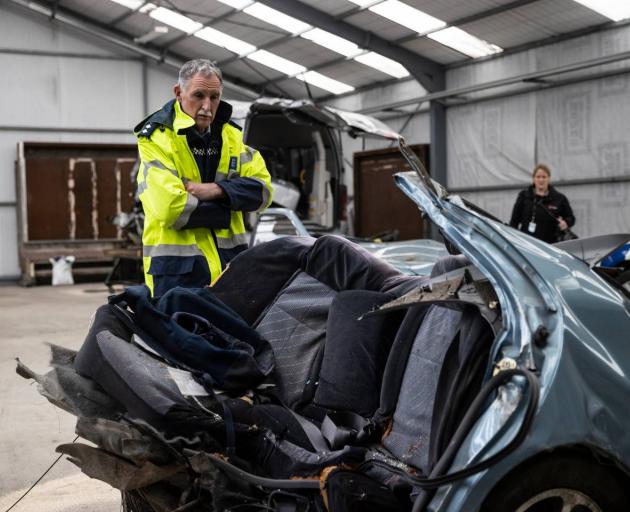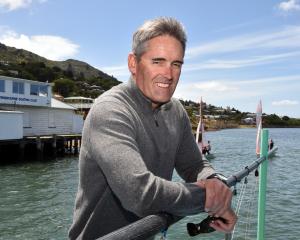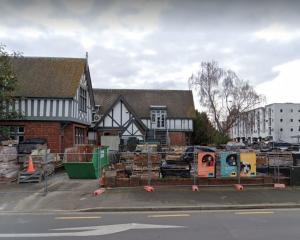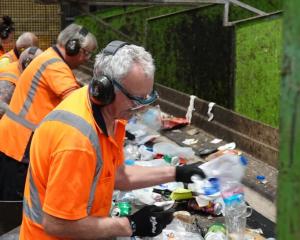
Former Associate Transport Minister Julie Anne Genter, who launched the latest Road to Zero strategy almost two years ago, said the track record of failure showed the Transport Agency's "contempt" for the public, and it should be overhauled.
"It's a shocking failure to deliver on agreed priorities and the chief executive should be held accountable," Greens transport spokesperson Genter said.
She added she escalated this last year to the Waka Kotahi chief executive and board, but it seemed to have changed nothing.
If New Zealand had the same rate of fatal crashes as Victoria, Australia, 145 fewer people would have died on the roads last year.
The rate is three times that of parts of Scandinavia with similar terrain and demographics, according to an Auckland Transport report.
- Timaru crash - how a small town's nightmare unfolded
- Family ‘devastated’ after young woman, mum-in-law killed
- One killed in truck crash on Bluff Highway
Deaths and serious injuries rose from 2013-17, then dropped from 2018, but with recent signs of picking up again; 2020 is an anomaly due to less traffic during the Covid-19 pandemic.
Road to Zero aims to deliver many thousands of kilometres of better roads, and stricter policing.
However, motorists are now more than twice as likely not to get breath-tested as eight years ago, and NZTA has done speed management work on just 120km of the highest risk roads, when the target is 3500km by 2024.
"We acknowledge [this] is very low," says a progress report put out in July, covering 2020.
The report also shows:
- 37km of median barriers installed, against a target of 300km by 2024 and 1000km by 2030
- 169km of side barriers, against targets 1700km and 4000km
- No high-risk intersections given safety treatment, against targets of 600 by 2024, 1300 by 2030
"Implementation delays have meant that the programme is lagging behind its targets," the report said.
Transport Minister Michael Wood put this down in part to Covid-19.
But Genter said the quieter roads presented the "perfect" chance for upgrades. But noting her experience as a minister, she said NZTA resisted the government to focus on building highways.
Police, too, were not doing the extra enforcement agreed with extra funding since 2018, she said.
Auckland Transport has criticised this lack of enforcement.

"There's an attitude of contempt among some of the leadership in some of these organisations," Genter said.
NZTA "have a demonstrated track record of ignoring the input from the public and from elected representatives".
"They seem to have their own agenda ... and don't have a lot of respect for what the public would like to be done with that money."
'Road to Zero is one of my highest priorities' - NZTA boss
Authorities, including Wood and Waka Kotahi, suggested next year's progress report would be better.
At the same time, the agency said it needed to - and will - "significantly ramp up" work to meet the 2030 targets.
Chief executive Nicole Rosie said in a statement: "Delivering Road to Zero is one of my highest priorities, and our resolve to reduce deaths and serious injuries on our roads is unwavering.
"The leadership, governance and reporting for Road to Zero have all been significantly strengthened over the past 12 months."
This would be a big change compared with the previous 10-year strategy, Safer Journeys, which the Ministry of Transport describes on its website as:
"Although it was based on a sound approach and compelling evidence, it did not have sufficient buy-in, investment, leadership and accountability to achieve a significant reduction in deaths and injuries."
The ministry has now set up an independent review into Road to Zero highway safety upgrades and enforcement.
Rosie said she was confident NZTA would pass muster.
She added it was not just up to agencies, but people to stop accepting a high road toll as "the price we all pay for moving around".
Recent coroners' reports say in two recent fatal crashes on State Highway One at Atiamuri near Taupō, median barriers, or rumble strips, might have saved the nine people who died.
NZTA assured the coroner the aim was to make rumble strips "universal".
Upgrades of roads nationally are meant to contribute 40 percent to the road toll reduction by 2030.
The coroner in one of these cases touched on another priority: to make trucks safer. That, too, is taking longer than promised
Genter said NZTA's plea that it was stepping up was its standard response, as when the $1.4 billion Safe Network Programme that began in 2018 struck problems.
"That is what the organisation has been saying for four years ... after four years, you would have expected to see some improvement in their ability to deliver on this."
When she confronted Rosie about Road to Zero last year "she assured me that lots of action was happening ... that it was an extremely high priority".
"So a year and a half later ... why is nothing changed?"
Ministers lacked power to intervene and should look at organisational or personnel change, she said.
Stricter enforcement against speeding, drink-driving and other risky driving is another "immediate priority" of Road to Zero.
The progress report barely mentions it.
However, official figures show between 2013 and 2020, the number of breath tests was cut half - from 3 million to 1.3m (2019) then 1.6m (2020), while the number of alcohol or drug-related road fatalities more than doubled from 73 to 160.
As for speed cameras, more were meant to be rolled out this year, but not before 2023 at the earliest.
Police told Auckland Transport they were upping enforcement.
A report endorsed this year by Auckland Transport suggested the Ministry of Transport was too slow with regulatory change under Road to Zero; and "not vigorously pursuing highly effective regulatory reform opportunities which most OECD countries are utilising".
The progress report details moves around laws and rules to make it easier to reduce speed limits, to impose tougher penalties on speedsters, to make vehicles safer, and to introduce a more graduated driver licence system.
A new governance group and a ministerial oversight group were being set up to provide oversight and accountability for Road to Zero, the ministry said - though the national road safety committee that folded in 2019 is yet to be replaced.
Genter said ministers lacked power to enforce targets.
"I just don't know what more I could have done.
"In the first year or two, it's plausible to say that they have to build up capacity, they have to improve the consenting, they haven't got enough money. But four years later ... it's pretty clear now that they're not reprioritising the funding."
Minister Wood said almost $3b was being put into Road to Zero over the next three years. His figures for highway upgrades stretching back to 2018 are 300km of new safety barriers and over 3000km of rumble strips.
To hit the Road to Zero target would mean by 2030:
- road deaths at 228 vs 318 in 2020
- serious injuries at 1560 vs 2200 in 2020
Police have been approached for comment.












